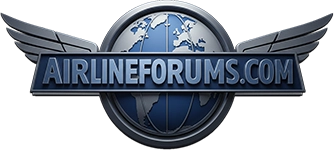Here''s the NTSB Preliminary:
NTSB Identification: FTW03FA160
Scheduled 14 CFR Part 121: Air Carrier operation of Southwest Airlines Company
Accident occurred Saturday, May 24, 2003 in Amarillo, TX
Aircraft: Boeing 737-300, registration: N343SW
Injuries: 68 Uninjured.
This is preliminary information, subject to change, and may contain errors. Any errors in this report will be corrected when the final report has been completed.
On May 24, 2003, approximately 2136:37 central daylight time, a Boeing 737-300 transport airplane, N343SW, operating as Southwest Flight 2066, sustained substantial damage upon impact with the runway lights following a loss of control during the landing on runway 04 at the Amarillo International Airport (AMA), Amarillo, Texas. (All times in this report are central daylight time, based on a 24-hour clock). The airplane was registered to and operated by Southwest Airlines Company, Dallas, Texas. The scheduled domestic passenger/cargo flight was operating under 14 Code of Federal Regulations Part 121. The 5 crewmembers and 63 passengers were not injured. Night meteorological conditions prevailed for the flight, and an instrument flight rules (IFR) flight plan had been filed. The flight originated at the MCCarran International Airport (LAS), Las Vegas, Nevada, at 1945.
According to the company and the flight crew, the first office was the pilot flying (PF) on the flight from LAS to AMA, and the captain was the non-flying pilot (PNF). The flight crew reported that the takeoff/initial climb from LAS, the en route phase of flight, and the clearance for the instrument landing system (ILS) at the destination airport were routine.
At 2127:00, the PNF made initial contact with the Amarillo Approach Control controller and reported the flight descending to 11,000 feet msl.
At 2127:04, the flight crew was advised by the controller to expect the Runway 04 approach at AMA.
At 2132:44, the flight was cleared for the ILS Runway 04 approach and cleared to land.
At 2133:00, the flight crew reported that the flight was at the edge of a thunderstorm.
At 2133:19, the controller briefed the flight crew on the cloud layers, visibility 10, winds 240 variable to 290 at 5 knots with thunderstorm and light rain at the airport.
At 2133:52, the flight crew reported that the airport was in sight but the visibility was starting to deteriorate.
At 2134:45, the controller reported to the flight crew the wind shifting from 220 degrees at 9 knots.
On written statements, the flight crew reported that the aircraft touched down firm, with no perceptible drift, and the thrust reverses deployed. The airplane inadvertently drifted to the left with both flight crewmembers applying control inputs in an attempt to keep the airplane on the runway. The airplane departed the left side of runway 04. Subsequently, the airplane was steered back onto the runway, where it came to rest. The flight crew performed the emergency checklist, assessed the situation, and the captain informed the passengers to remain seated. The airplane was deplaned utilizing the air stairs without further incident.
At 2135, the AMA weather observation: Wind variable at 6 knots, visibility 3 miles, heavy thunderstorm and rain, scattered clouds at 1,700 feet agl, broken clouds at 4,800 feet agl, overcast layer at 7,000 feet agl, temperature 18 degrees Celsius, dew point 15 degrees Celsius; remarks; wind shifted at 2107, thunderstorm began at 2057, rain began at 2058, and the barometric pressure rising rapidly.
At 2140, the AMA weather observation: Wind 110 degrees at 7 knots gusts 18 knots variable from 070 degrees to 150 degrees, visibility 1 statute mile, heavy thunderstorm and rain, clouds few at 400 feet agl, broken clouds at 1,700 feet agl, overcast layer at 5,500 feet agl, temperature 17 degrees Celsius, dew point 15 degrees Celsius, and the altimeter 30.05 inches of Mercury.
The FAA inspectors and Southwest maintenance team, who responded to the accident site, found the nose landing gear collapsed aft into the forward navigation/electronics bay. The structural damage extended from airplane fuselage station 259 through 360. The integrity of the pressure bulkhead was compromised.
